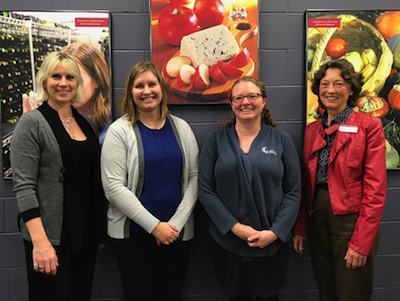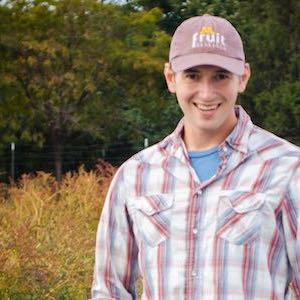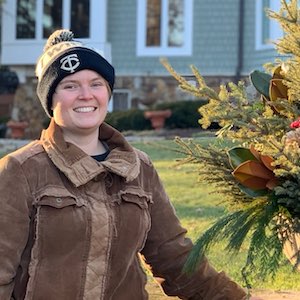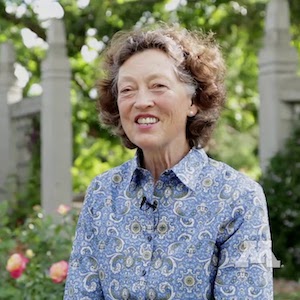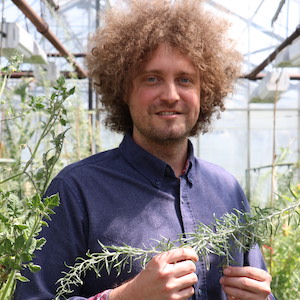The Wednesday Seminar in Horticulture Science on December 12, 2018, featured three soon-to-be Master of Professional Studies in Horticulture graduates’ capstone project presentations.
Designing Backyard Wildlife Sanctuaries
Marissa Bendickson presented on Designing Backyard Wildlife Sanctuaries. She first addressed the reasons for creating these individual sanctuaries: conserving native plants and grasses; creating habitats for local animals; providing food and protection for wildlife. Wildlife, she explained, encompasses more than mammals—it includes insects, butterflies, birds, and amphibians.
To design a backyard sanctuary, Bendickson considers the existing local habitat and landscape, potential plant and wildlife interaction, local flora and fauna, and community involvement. Her first step would be to tour the client’s land to understand the microclimates (sun/shade distribution), soil makeup, and seasonal limitations. The first draft of the plan would display the existing layout, and the second draft would include newly proposed elements.
In the sample project she presented, she outlined a property that would provide nesting and protection for bees, hummingbirds, and migrating birds; shrubs and trees for additional food, nesting, and protection; hydrangea trees for pollinators and birds; and phlox and strawberries to populate part-shade areas. In full-sun sections, she added rose bushes, milkweeds, and asters. She also included birdhouses, bird baths, a pond, and fencing for protection against deer and other animals.
She cited specific resources to help people explore the possibility of creating their own backyard sanctuaries. The National Audubon Society website can help you see what native plants and flowers you can grow in your particular area.
Organic Lawns by LUNSETH
Shay Lunseth then presented a profile of her lawn care company Organic Lawns by LUNSETH. She and her husband began the company in 2007 and expanded to organic methods in 2010. In 2013, they had 30 customers, and in 2018 that number had grown to 950. (Lunseth started the MPS program in 2015 and attributes some of her company’s success to the knowledge she brought to her business.)
Lunseth went through the company’s website, which shows why organic methods are a good choice, the different services the company provides, and a sign-up to receive a personalized quote. The standard organic program, she explained, will work with any lawn type, but the process does take time. This is due to the weed control. Lunseth does a lot of weed education for customers, as this is a big hurdle (5–10% weeds is okay for diversity and pollinators!). In early spring, they start the treatment with corn gluten meal, then fertilize and apply liquid iron in the late spring. Late summer sees a lighter application of gluten, then they aerate in the fall, overseed, and fertilize again.
Lunseth said that they are considering franchising their business and are writing an in-depth operations manual, or press book, they can use to train franchisers and employees. The manual would contain a summary of the process, commonly asked questions, and business tools to help with marketing and communication.
Lunseth said they make four trips to a client’s house to complete all the steps. They offer additional services like dry compost, compost tea, and landscaping.
The manual would allow for differences in climate and area of the country, as well as provide general references. It would include information on turf, dog spots, compost tea, aeration, and equipment, as well as space for a franchisee or account manager to create their own documentation depending on their clients’ interests.
Business Plan for Middlebrook Farm
Terri Schlegel-David presented her 12-year business plan for developing Middlebrook Farm, named after the U of M residence hall where she met her husband. She intends to grow six different fruit crops to start with: strawberries, pumpkins, apples, kiwi berries, raspberries, and blueberries.
Schlegel-David’s first step was to do a market analysis. She browsed the Minnesota Grown directory to scope out the competition and learned that there are currently 185 farmer’s markets in the Greenfield area, with 47 farms within 25 miles of her proposed site.
She discovered her proposal has a few distinct advantages: she could potentially offer a fruit-only CSA, which is rare; she has access to horticulture experts and resources at the U of M; she is a female business owner, which may appeal to her target audience; she would offer a wide variety of fruits; and she has business operations experience on top of her horticulture degree. In addition, Schlegel-David built in the flexibility to grow or scale back the business as needed.
Schlegel-David has five acres now and hopes to acquire 30 more. The plan is in the pre-land acquisition phase, where she will conduct research, buy the online domain, complete the business plan, and build test sites.
Next year she will focus on networking, securing loans, buying equipment, visiting farmer’s markets, and testing more fruit. In 2020, she will start to actually acquire land. By year nine, the farm will be in full production. Year four, 2023, should be the first year of profit.
